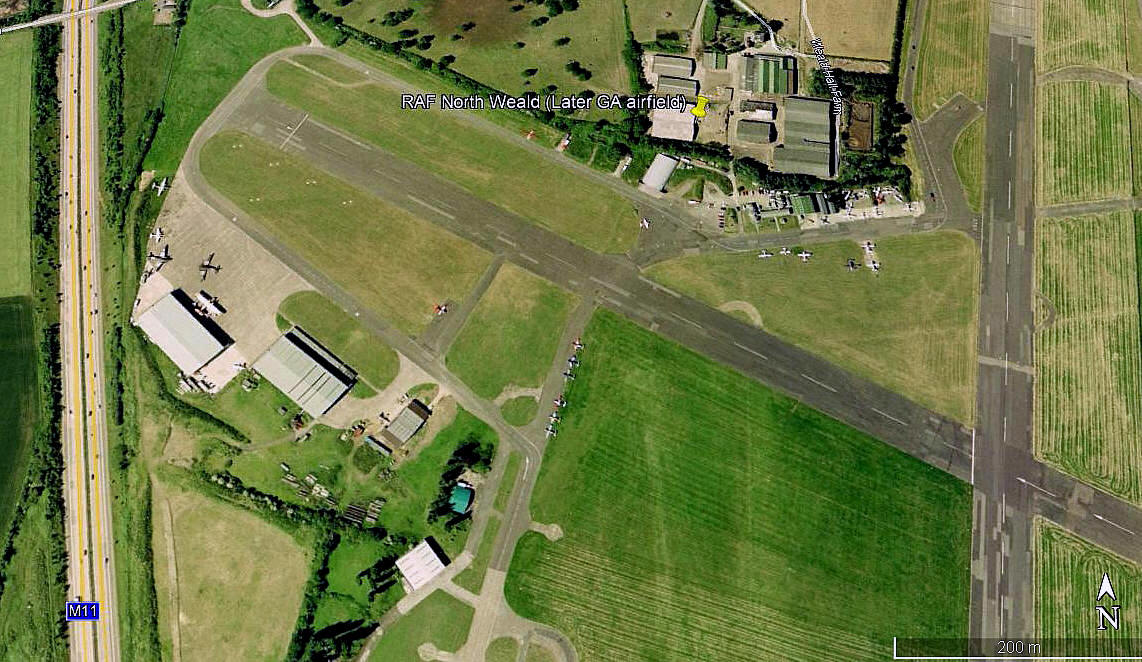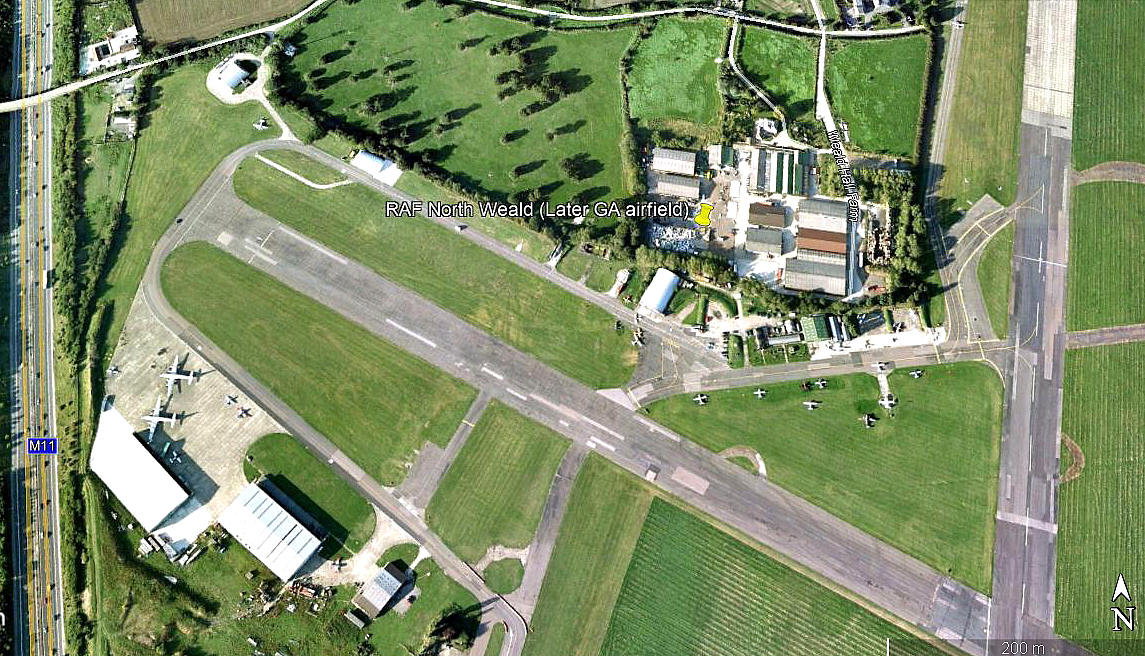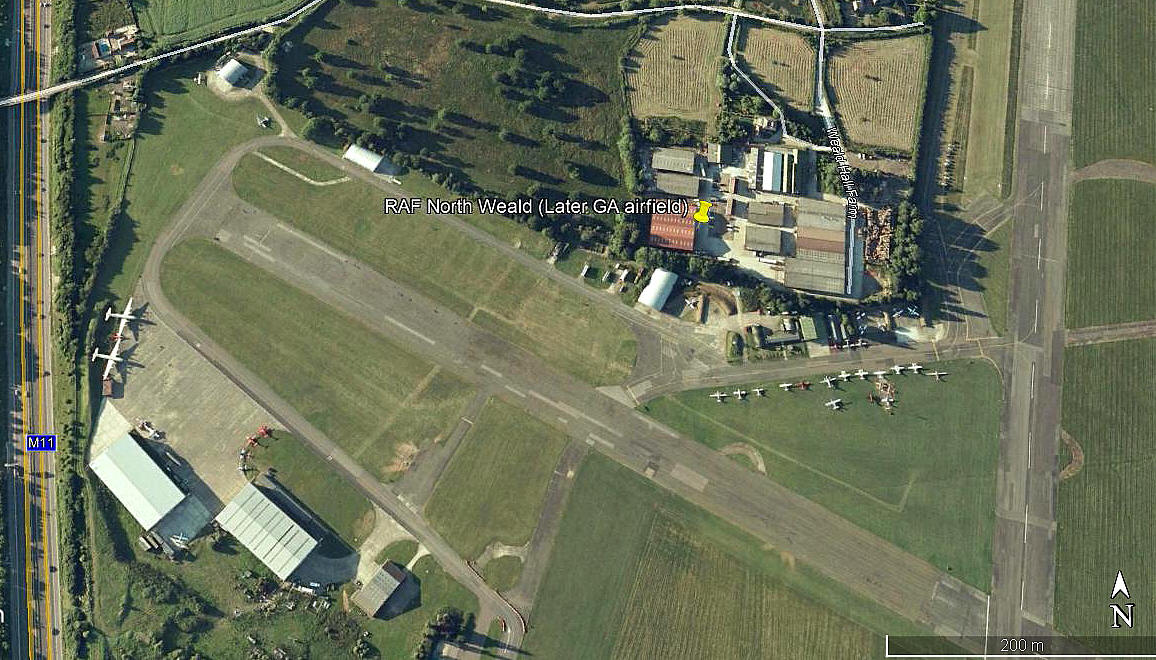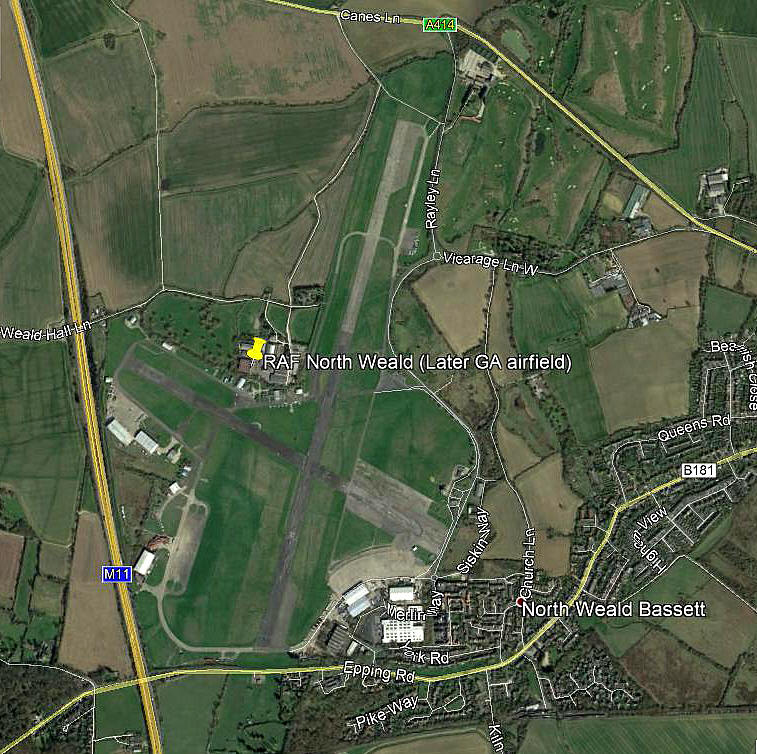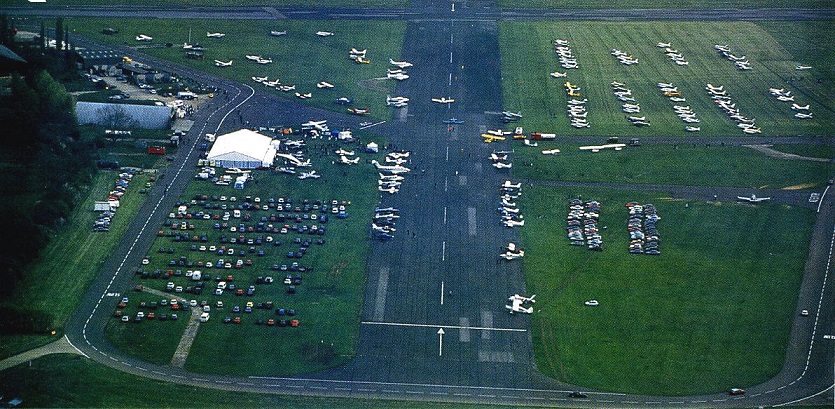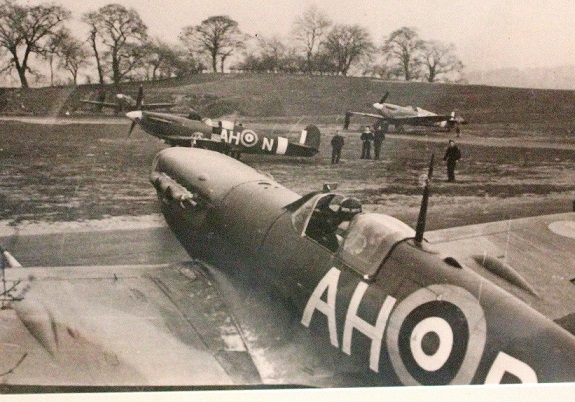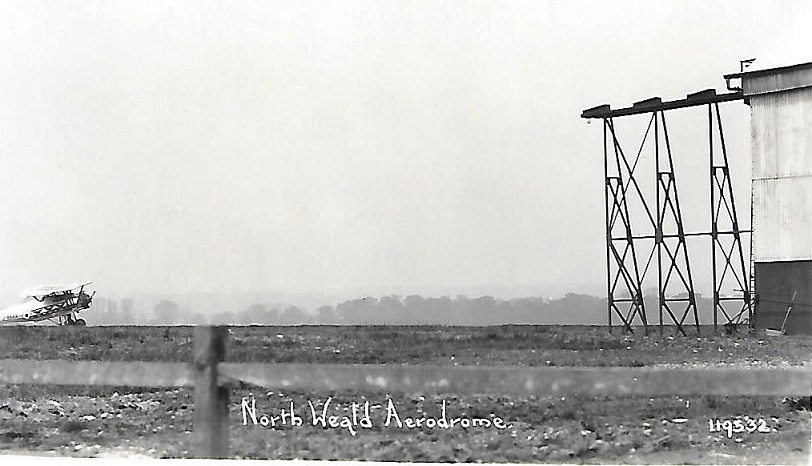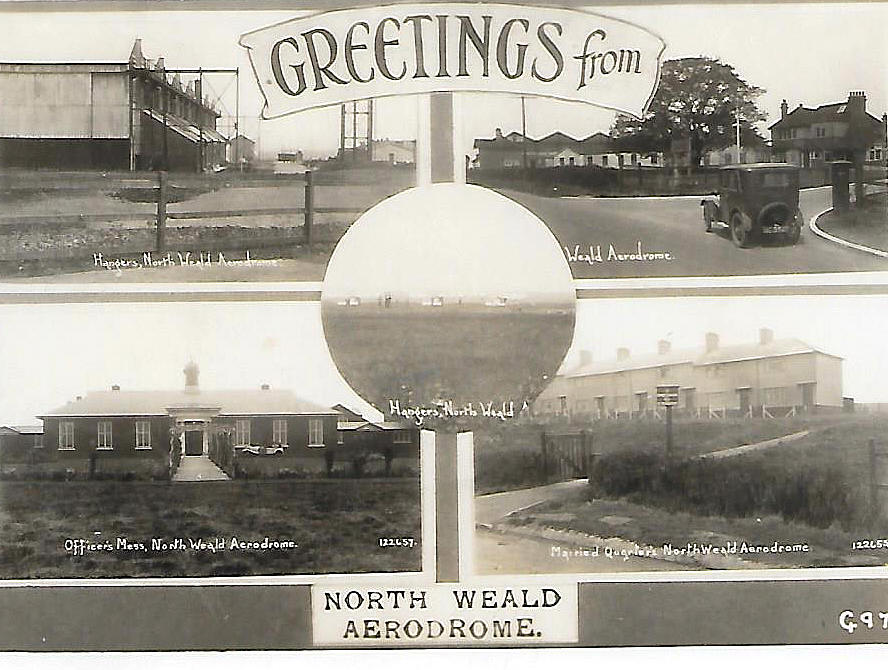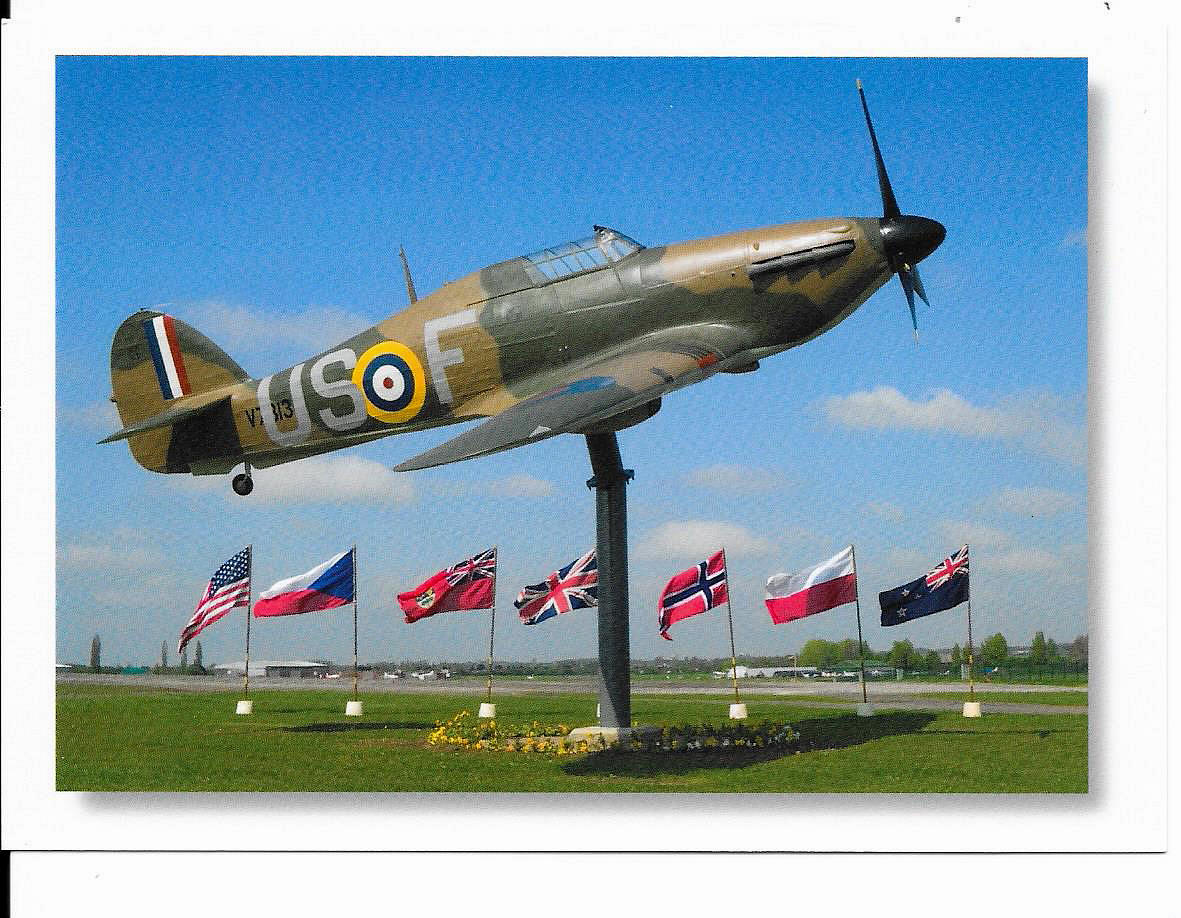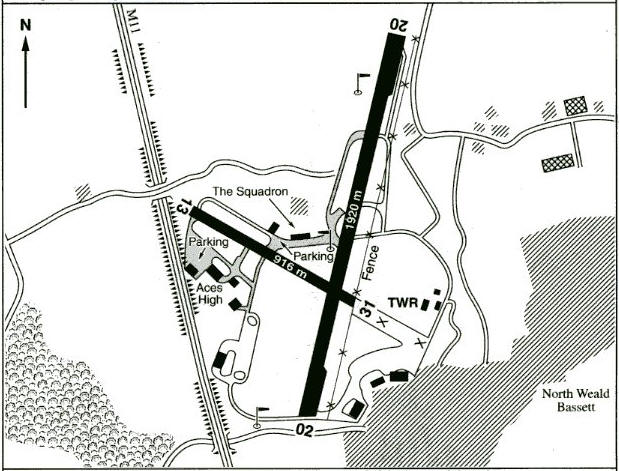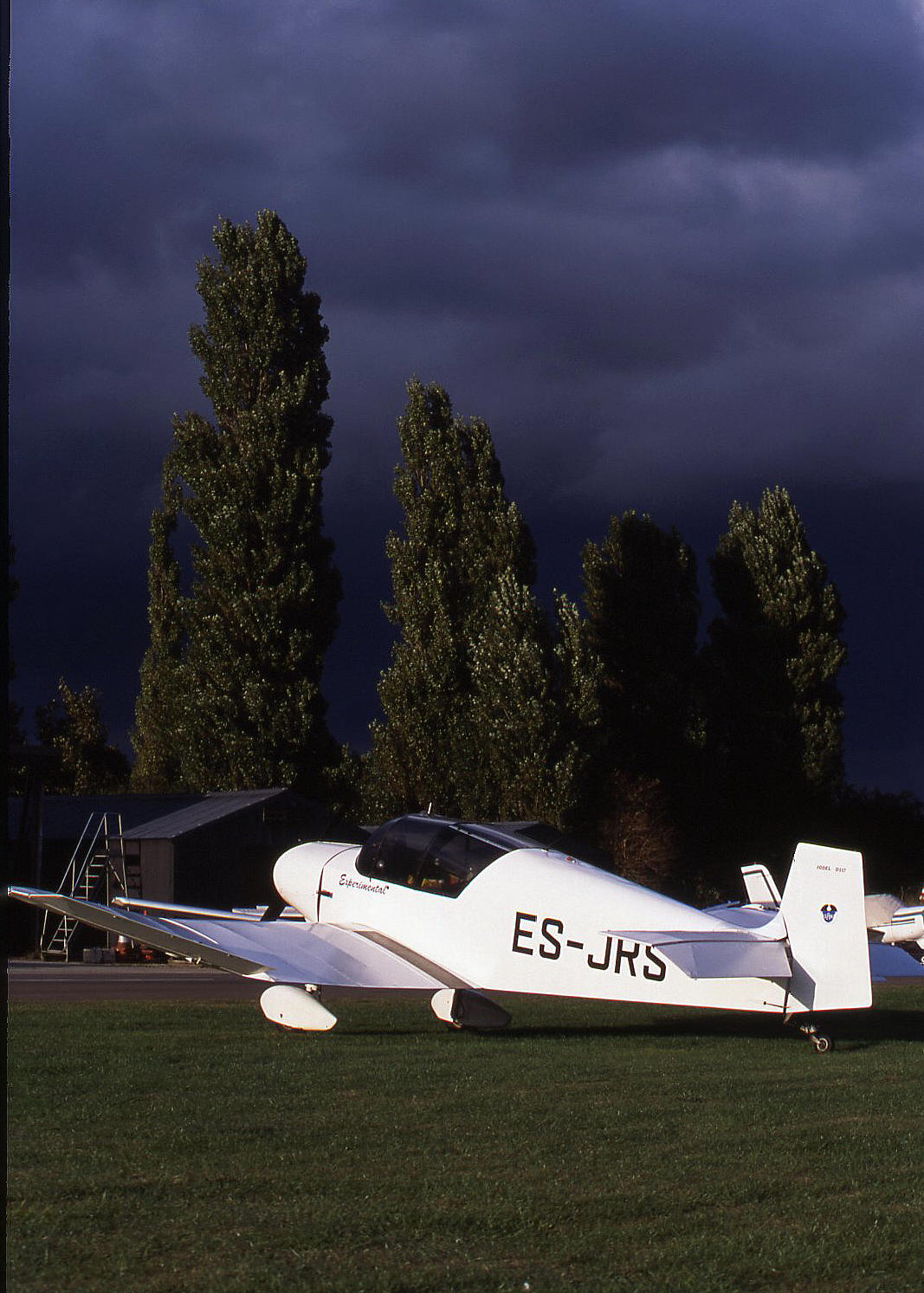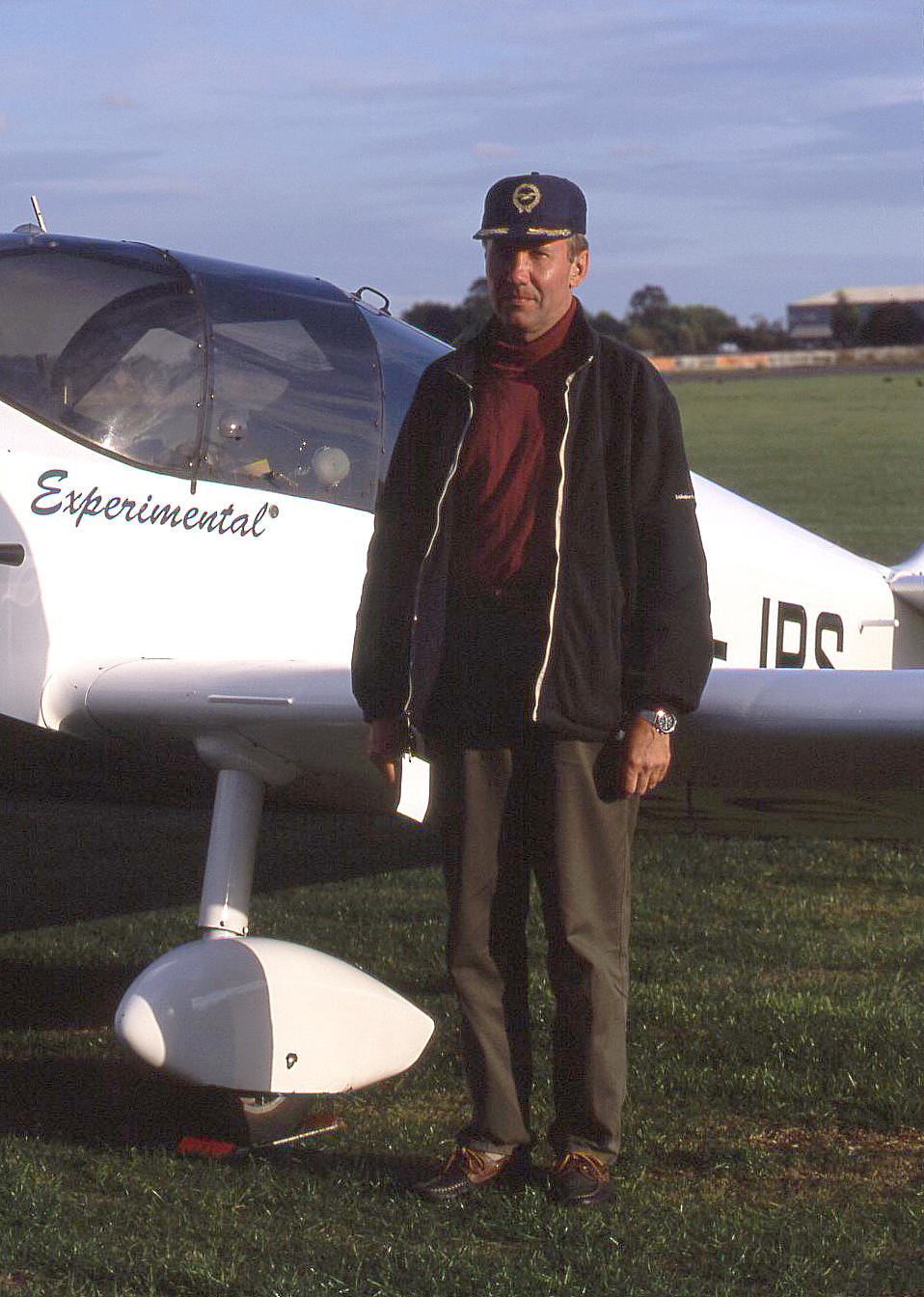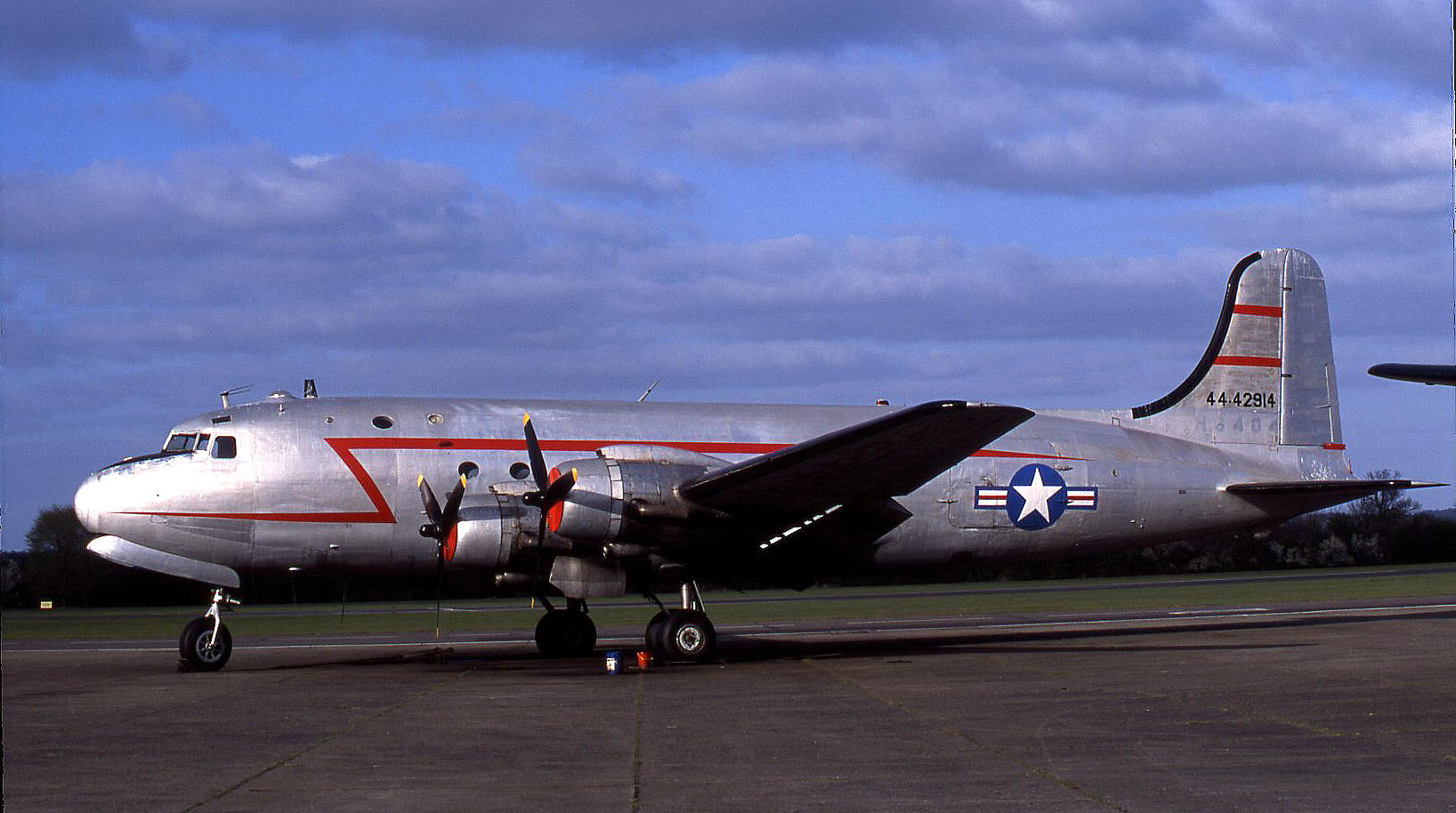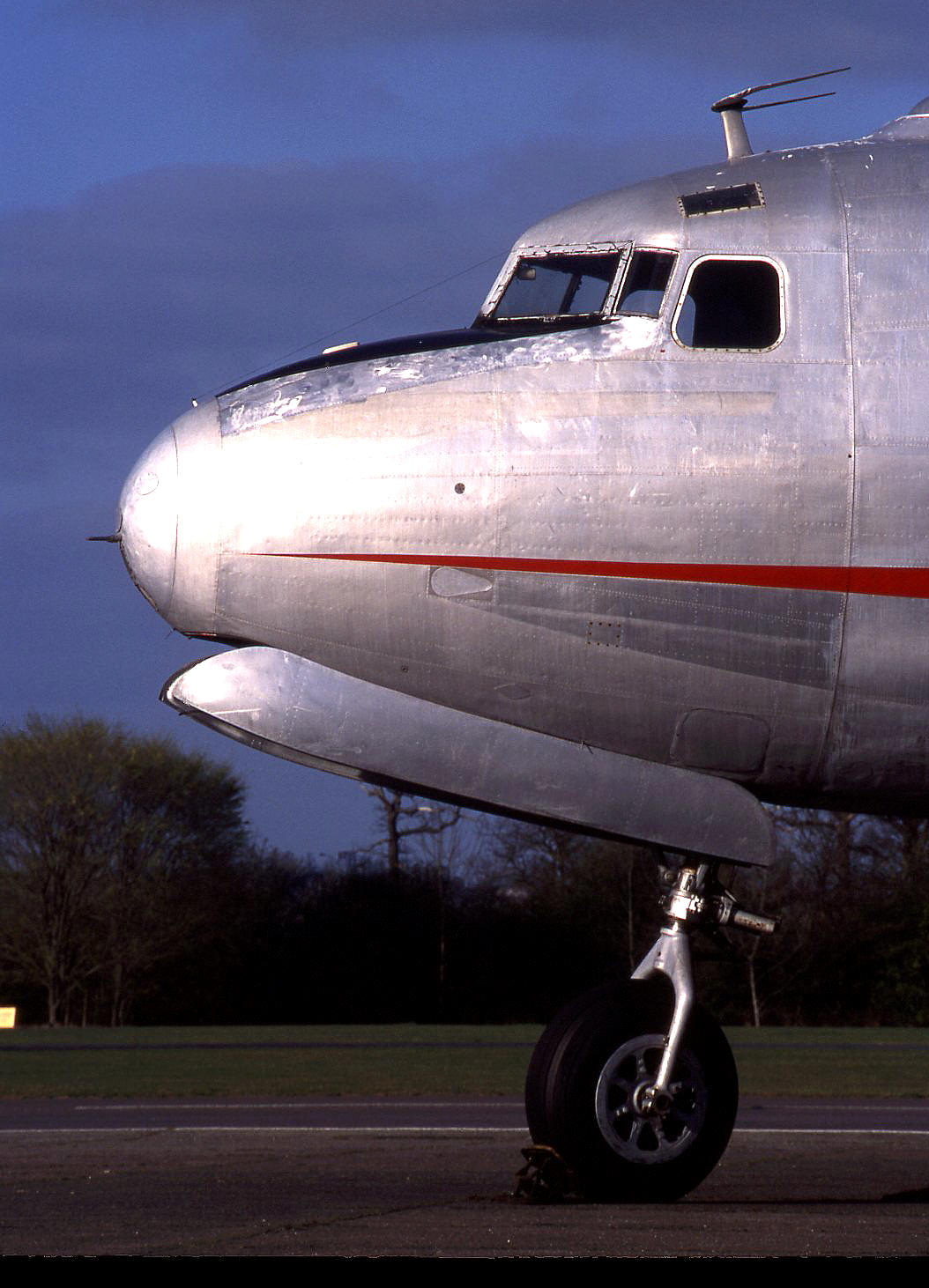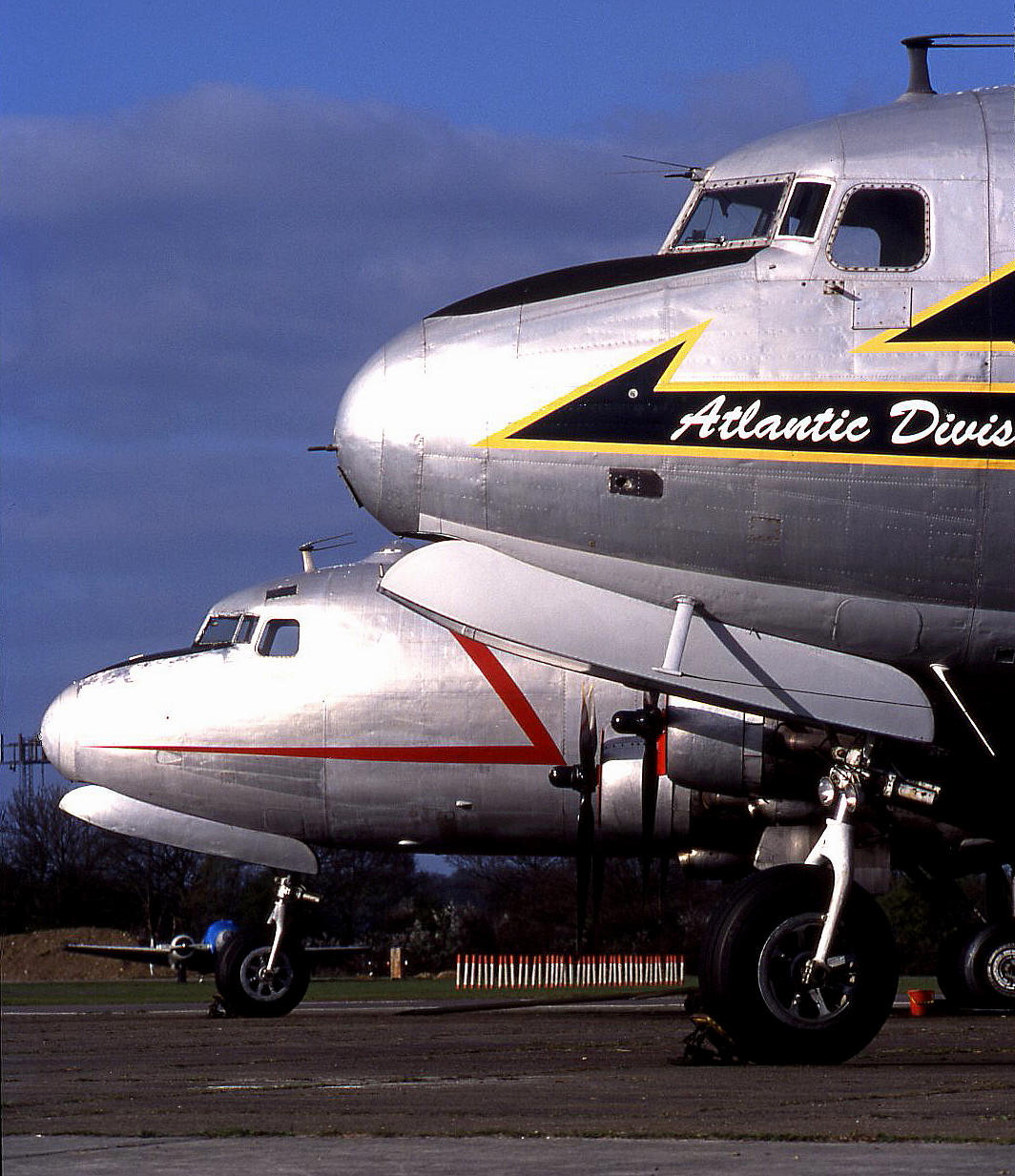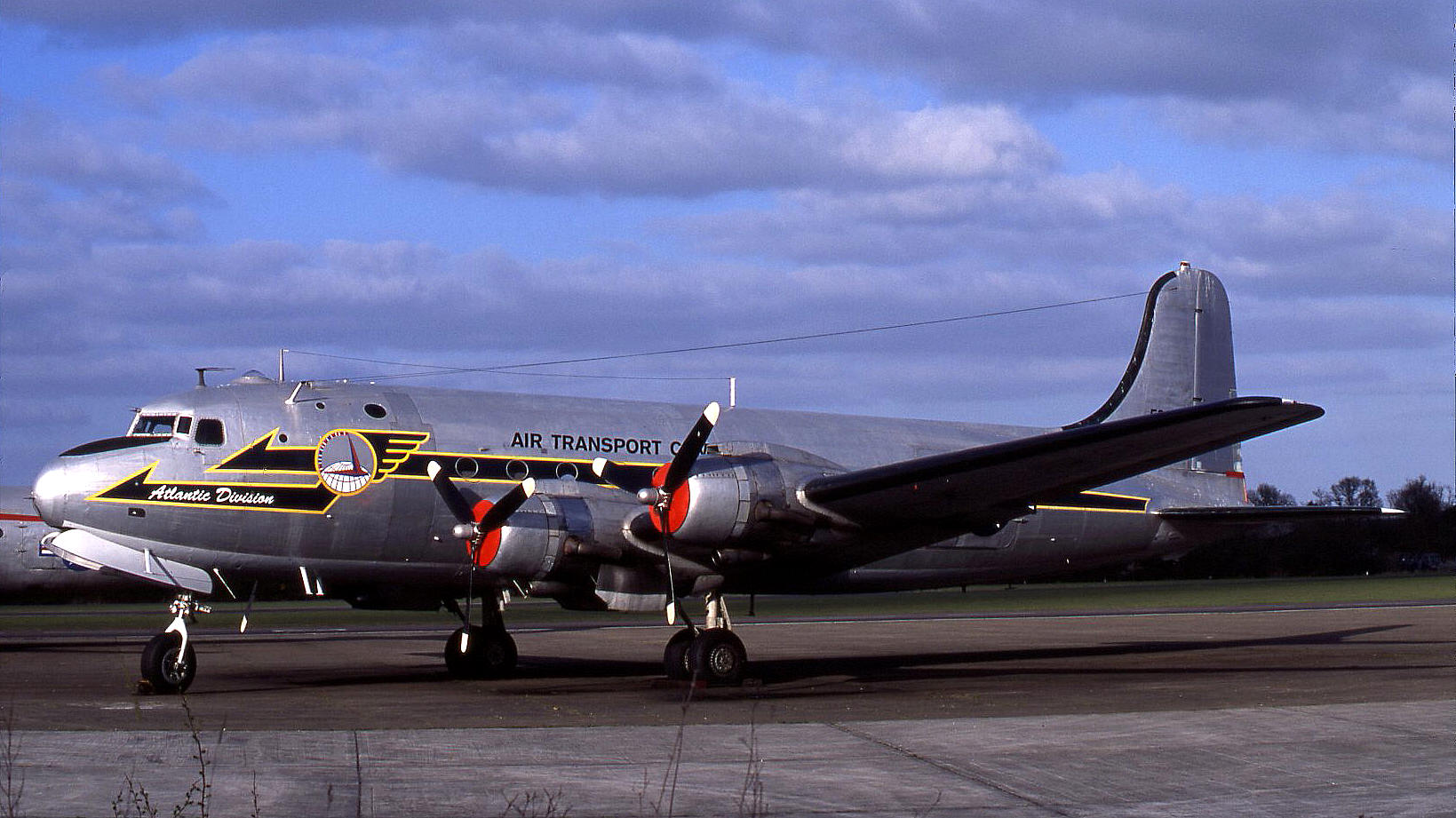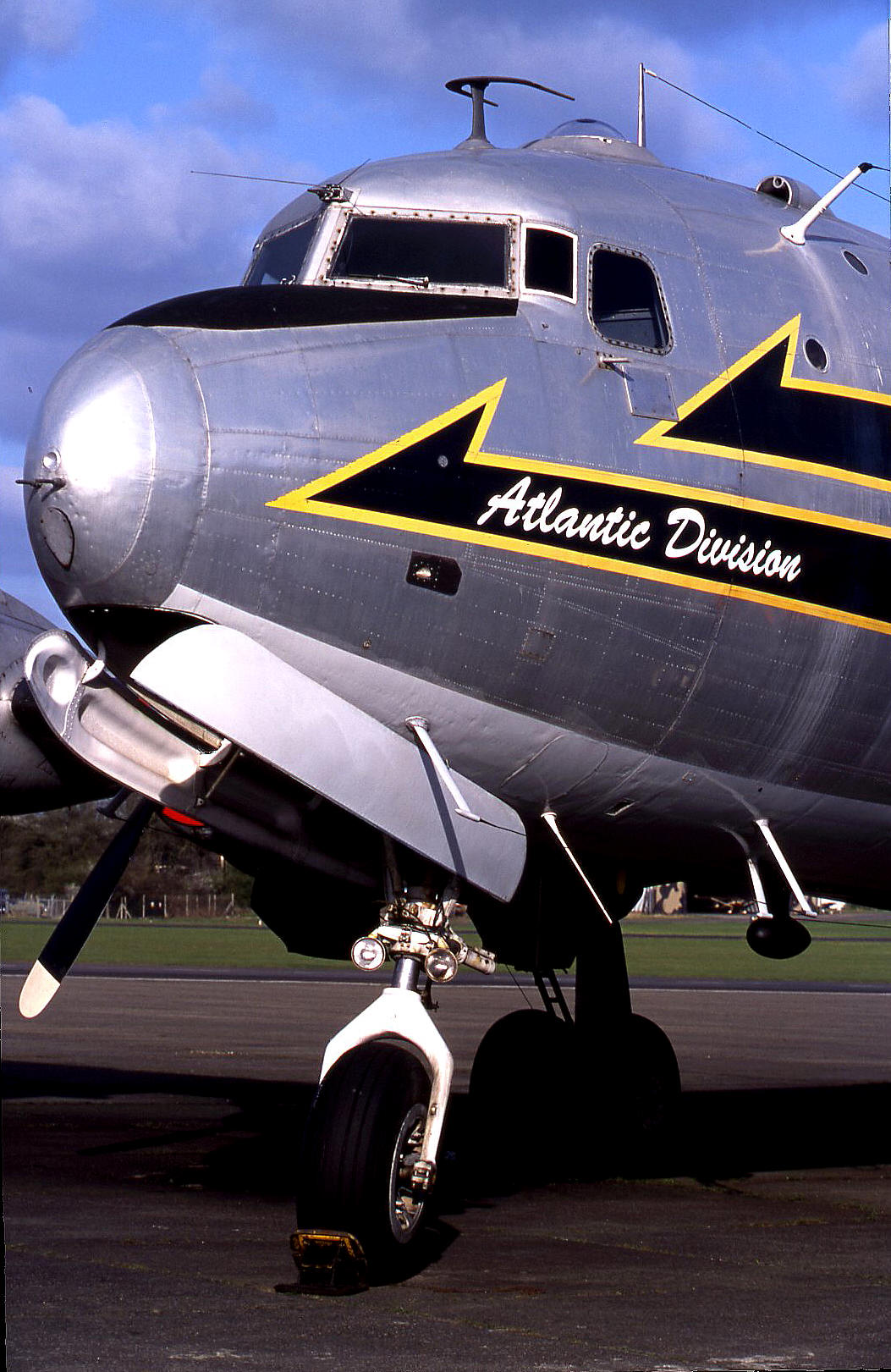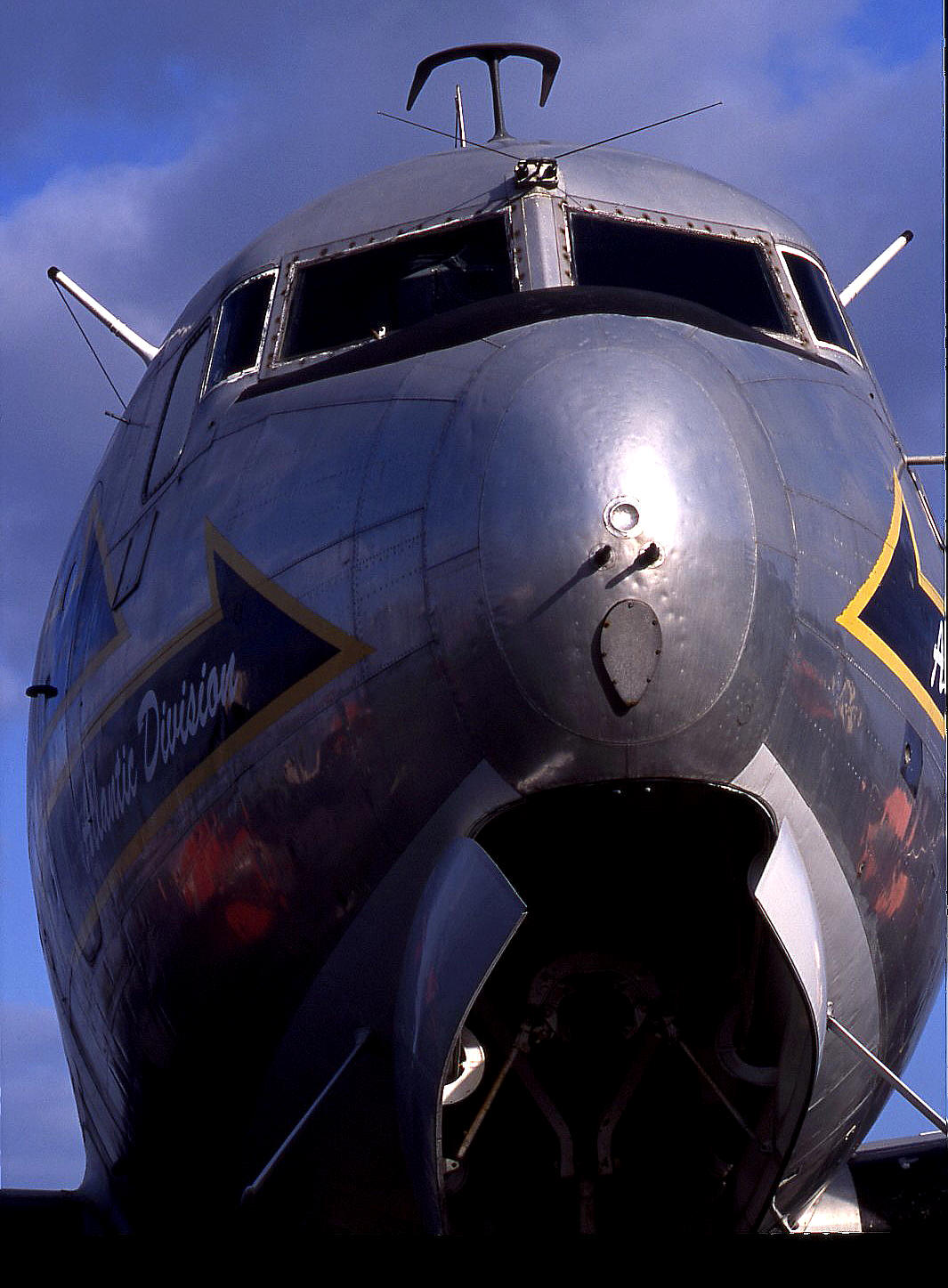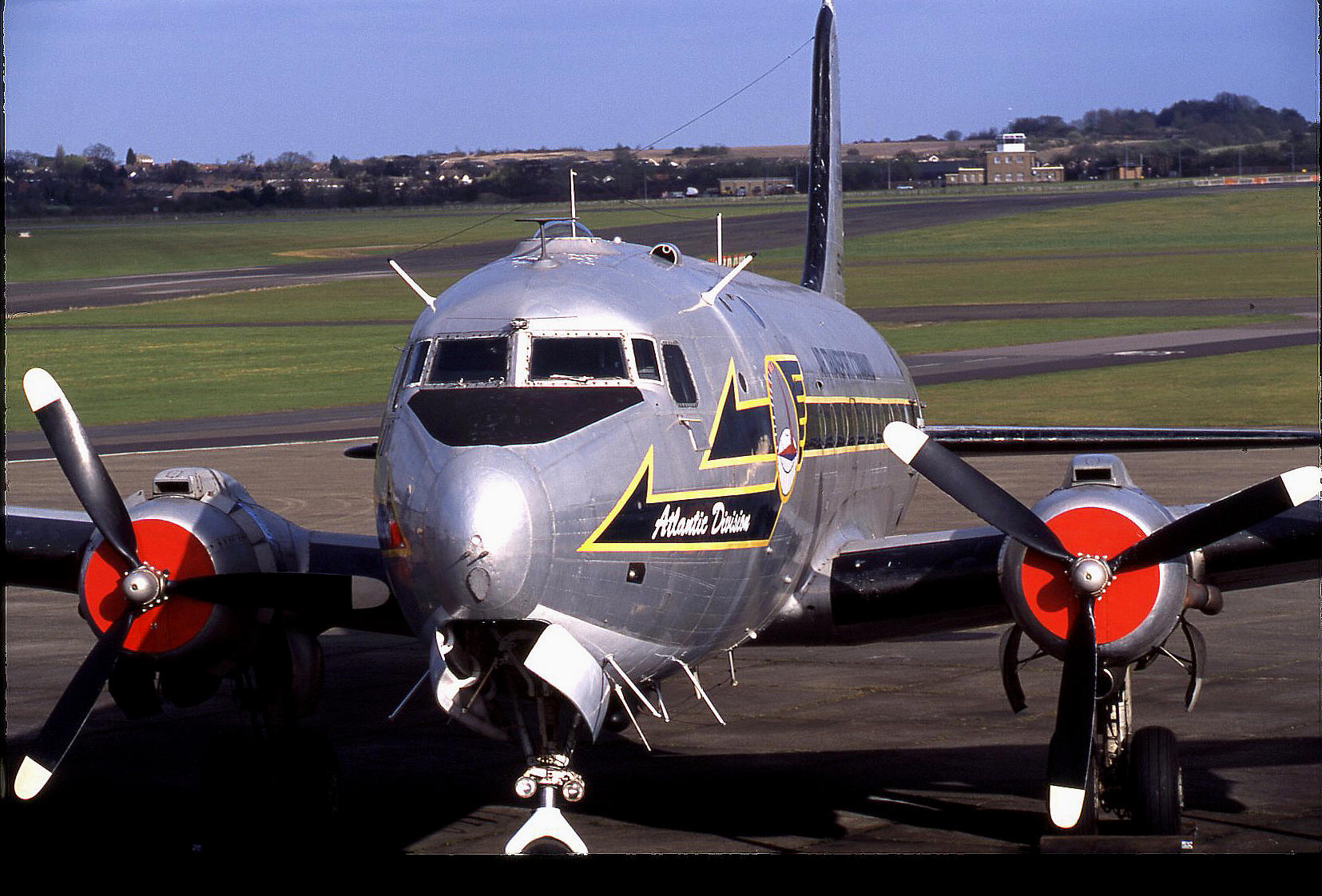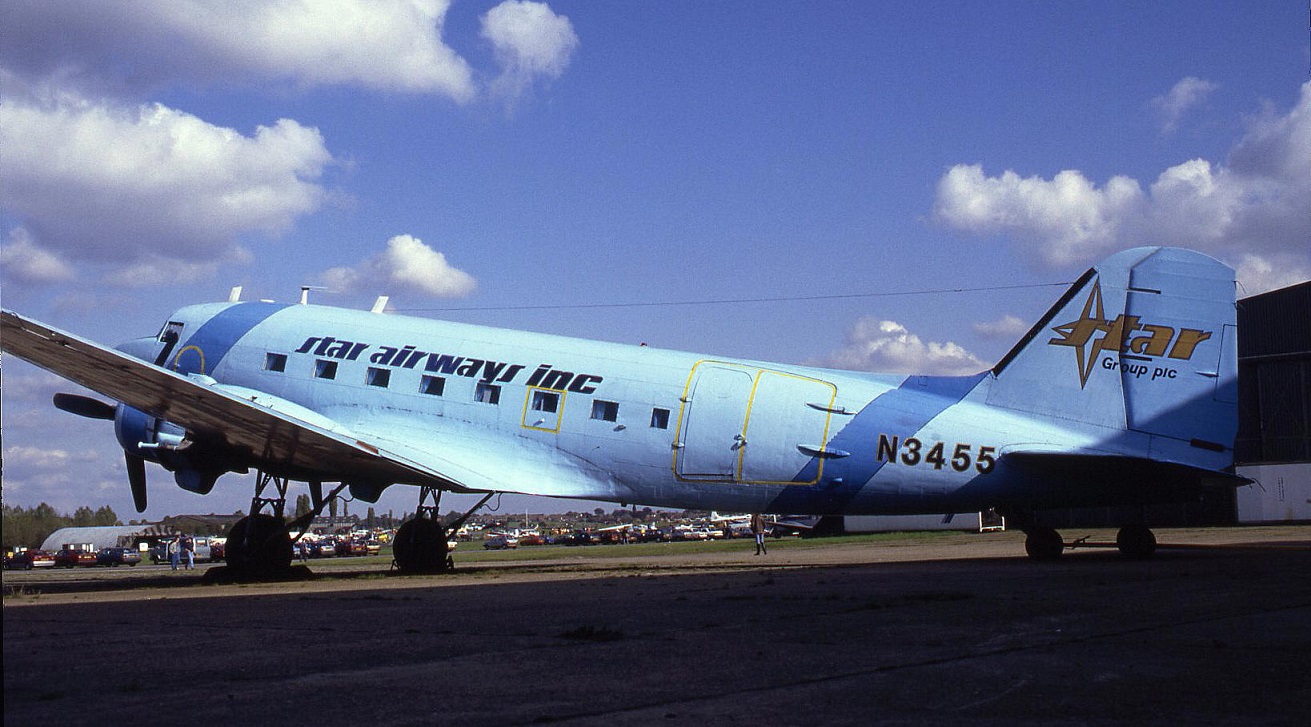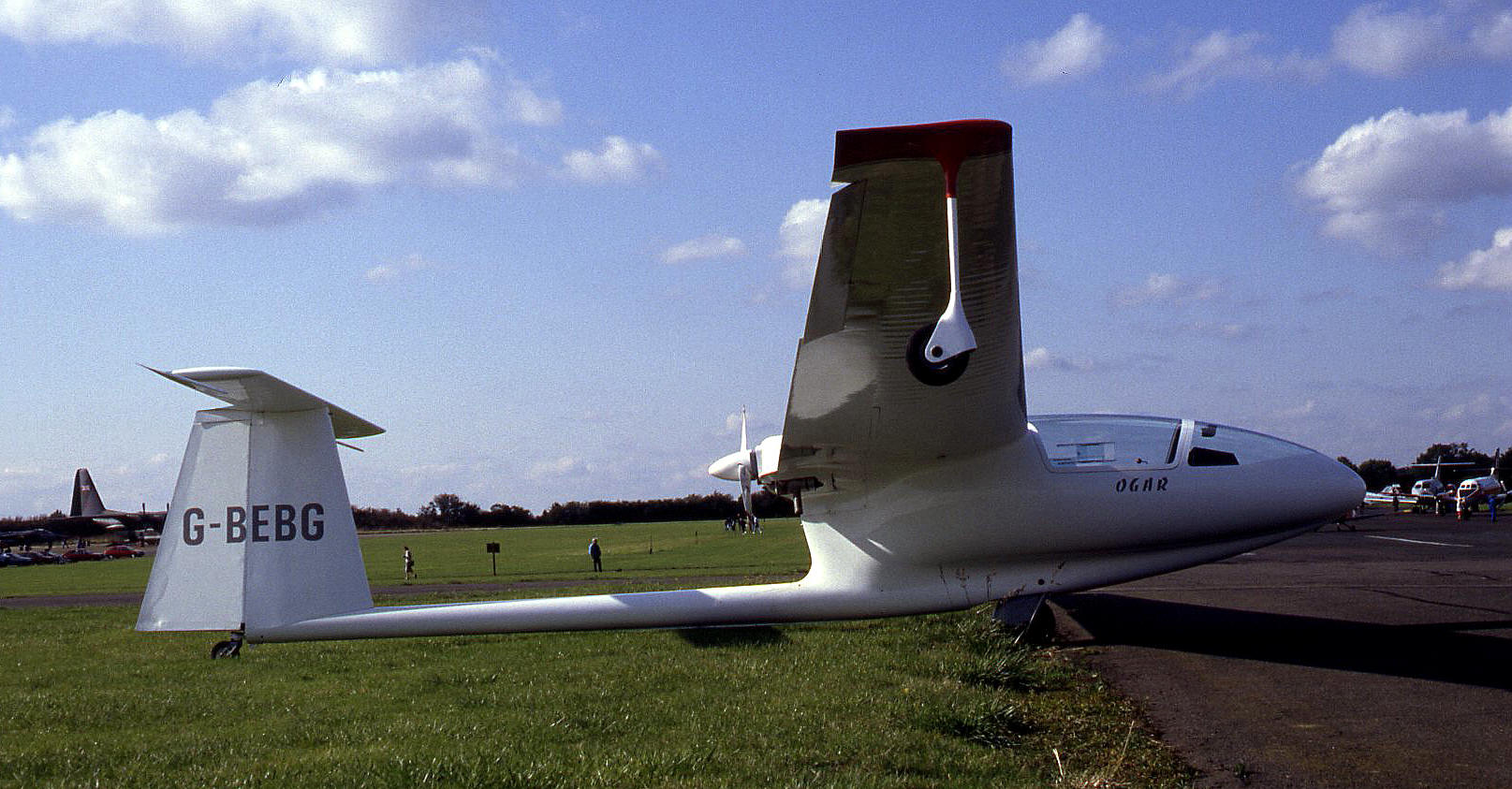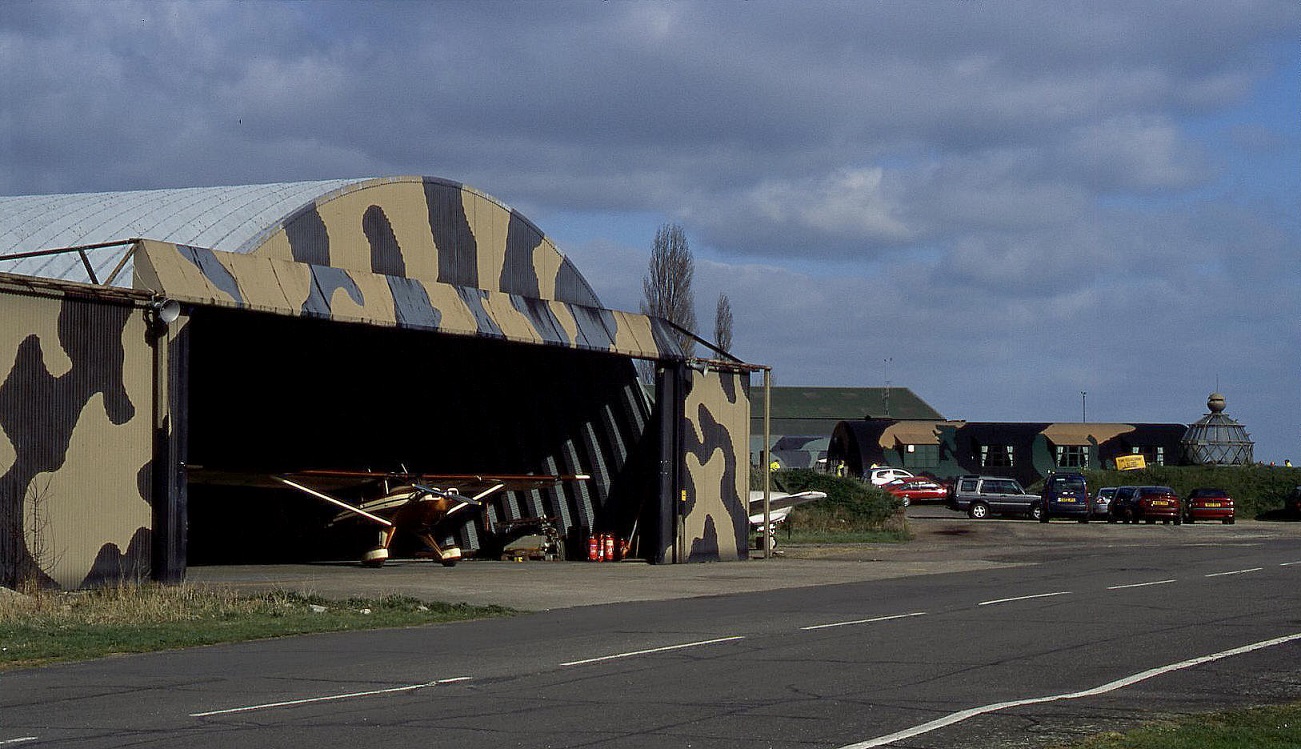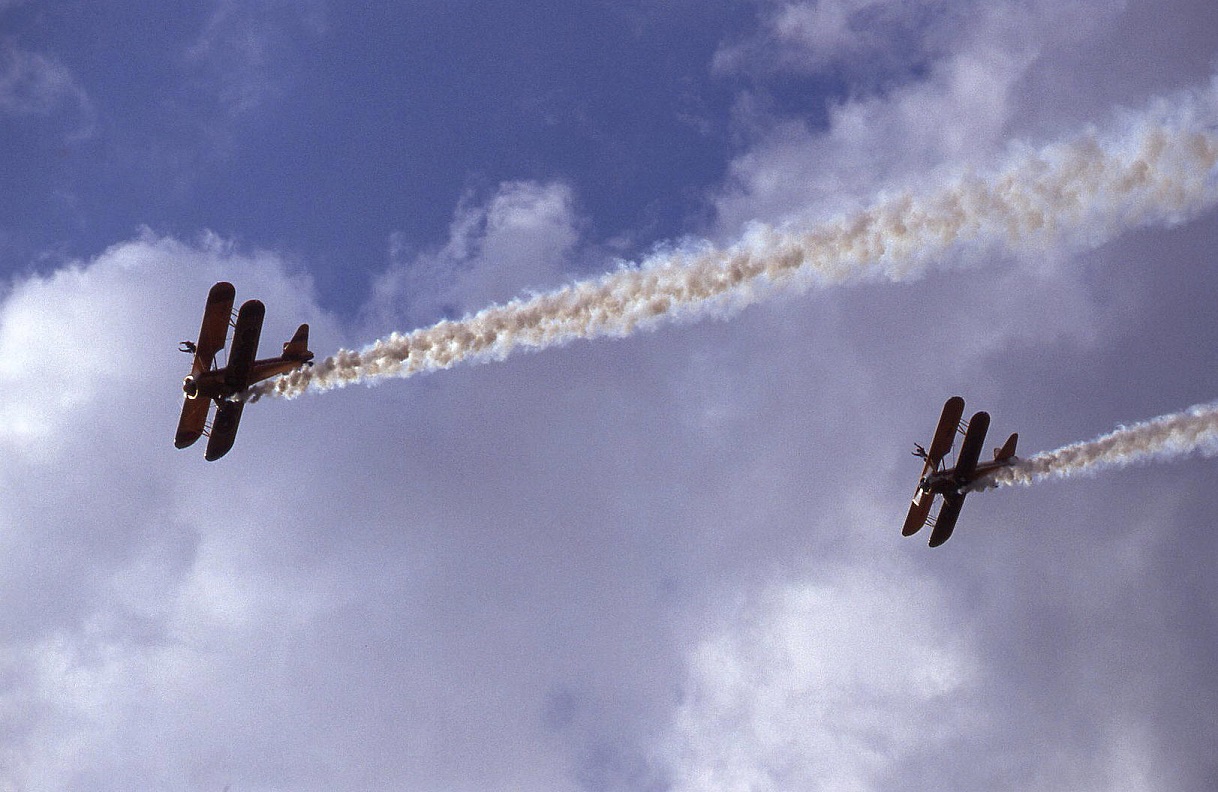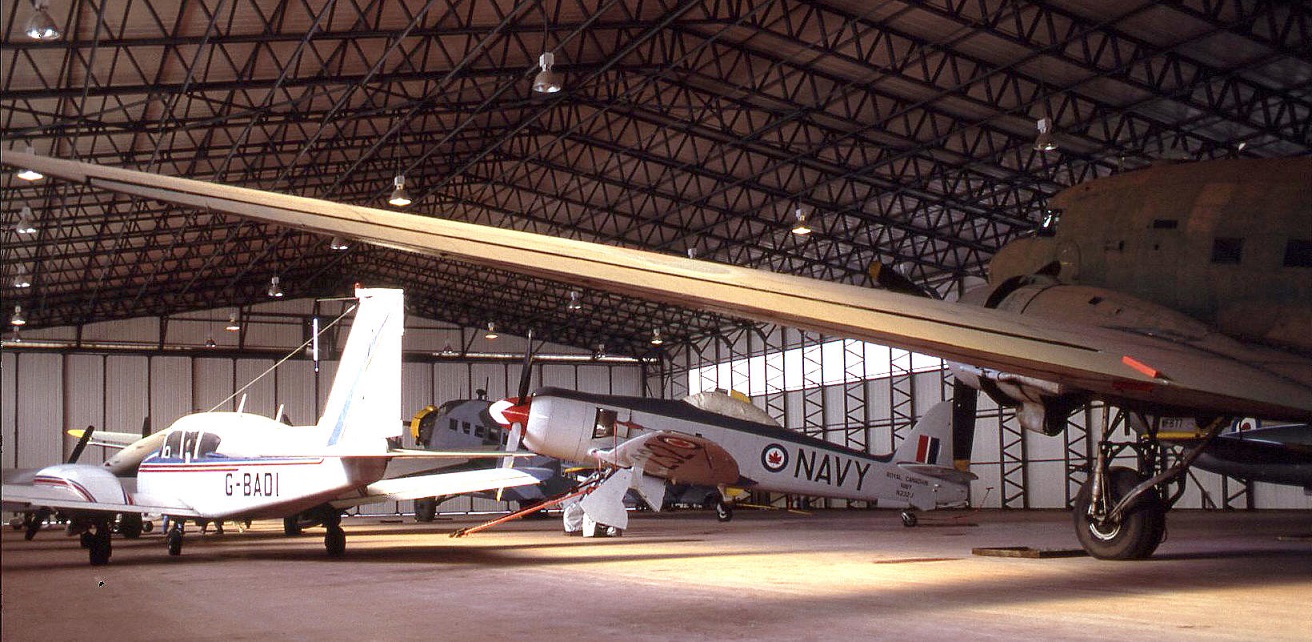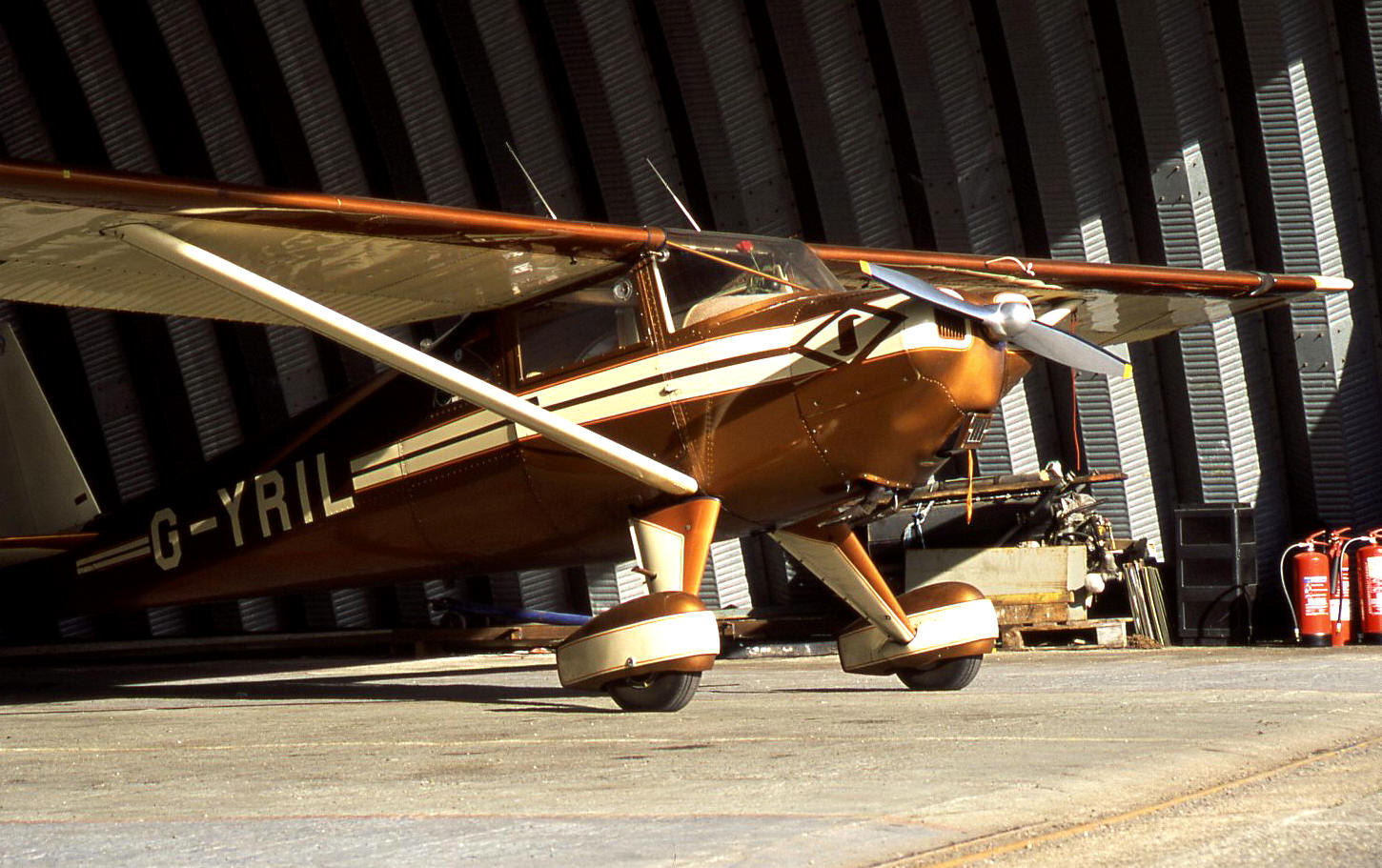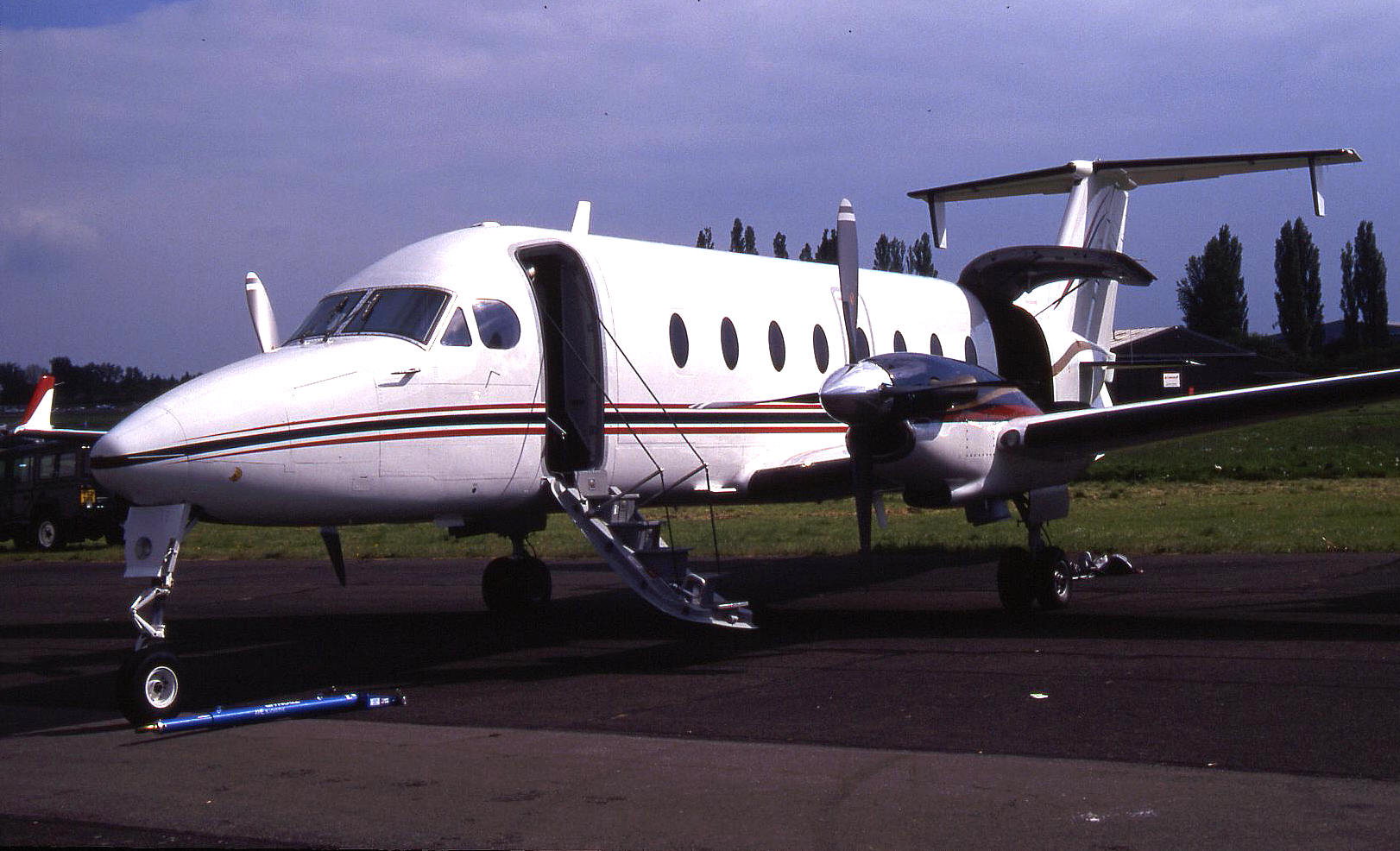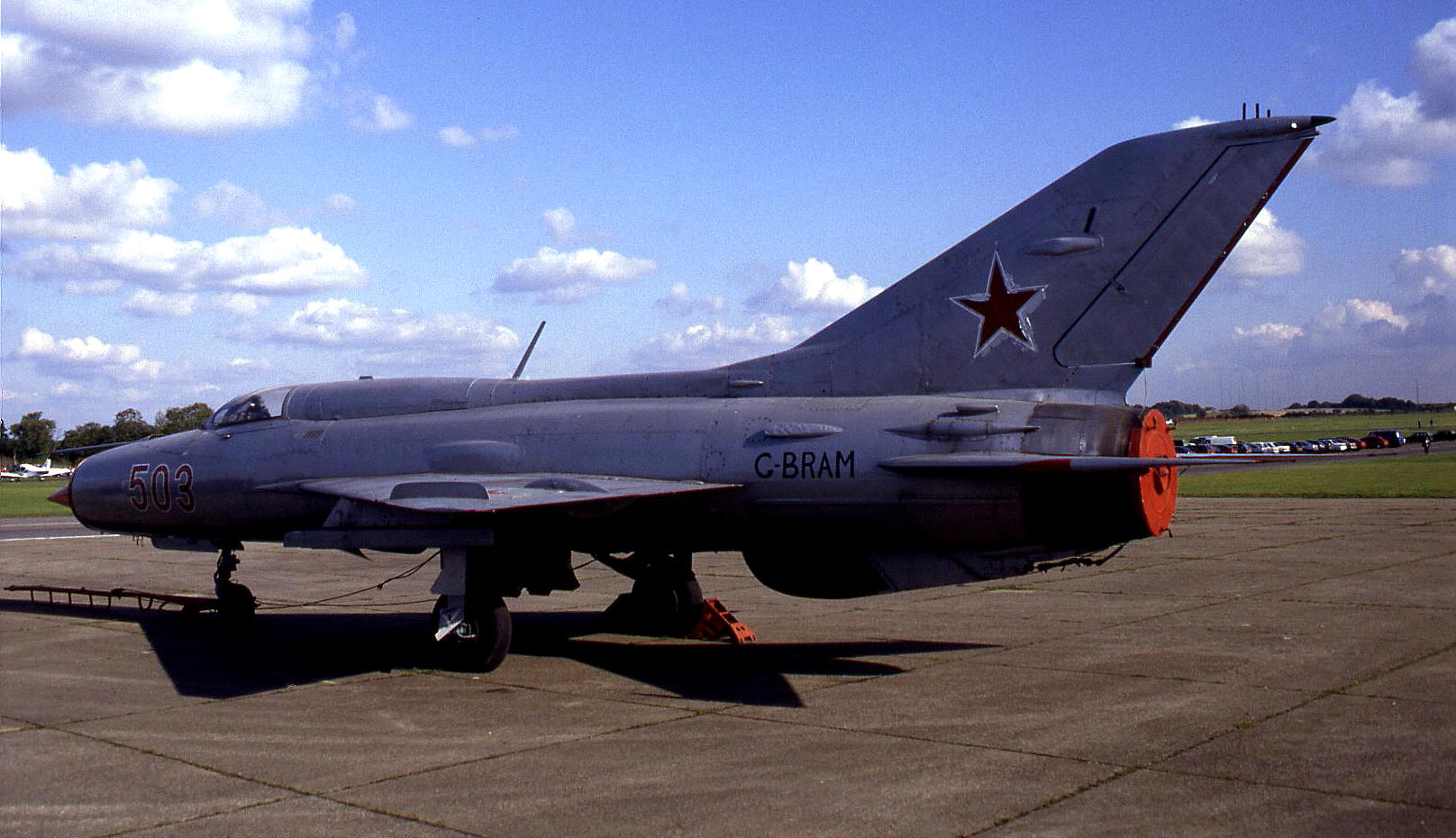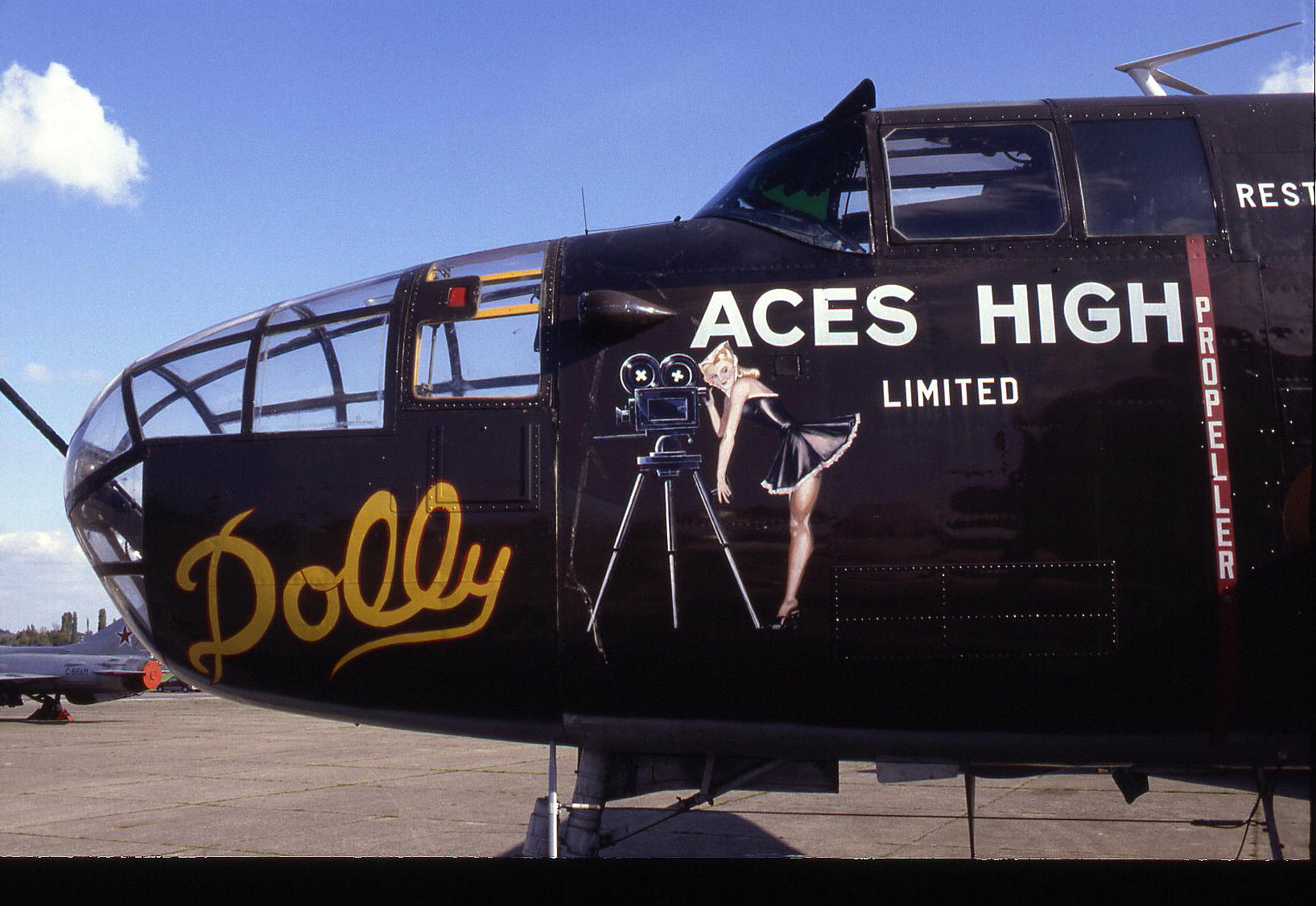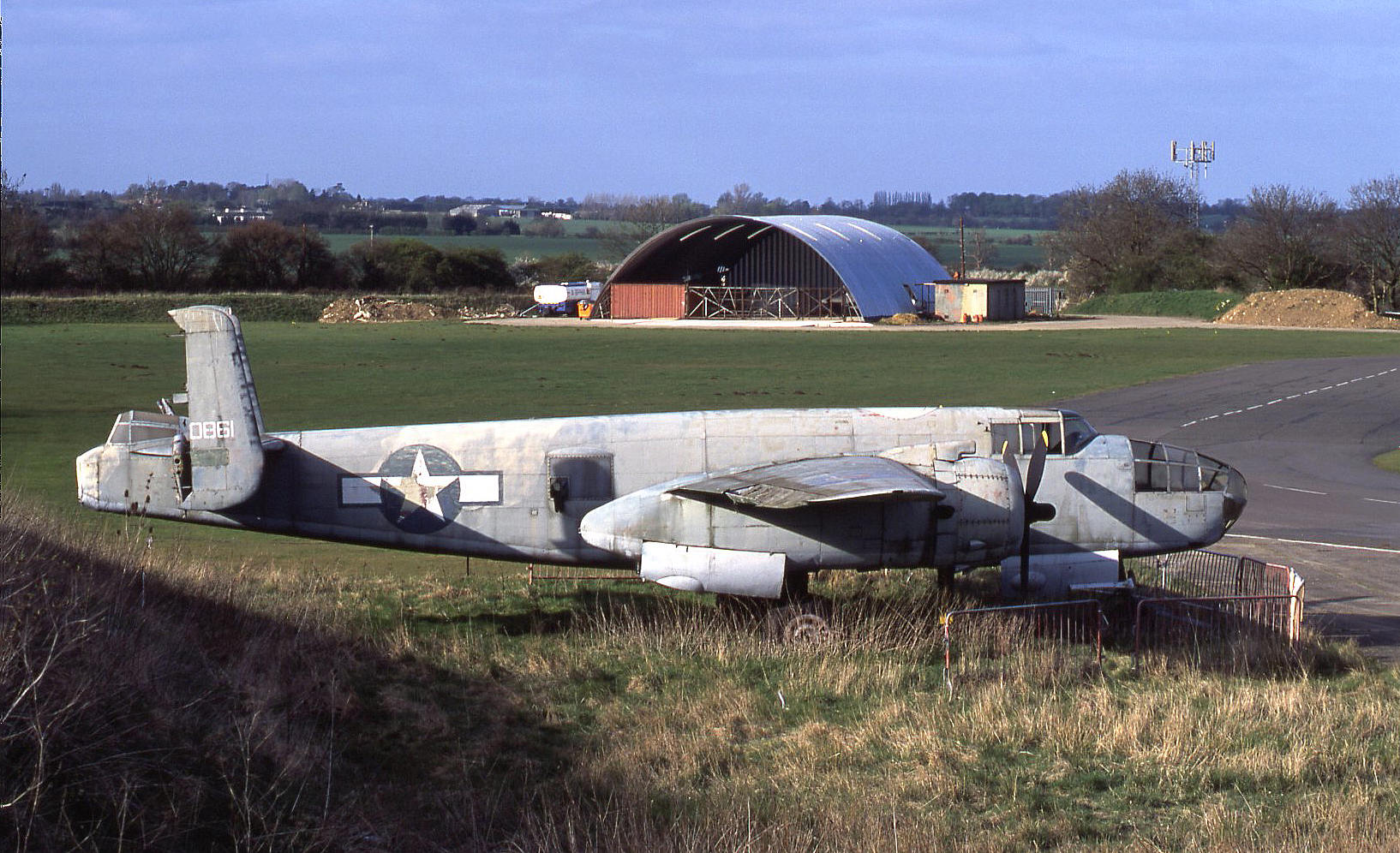North Weald
NORTH WEALD: Military aerodrome later civil aerodrome
(Originally known as NORTH WEALD BASSETT)
Note: These pictures were obtained from Google Earth ©
Note: This first picture, probably taken by Austin J Brown (?) was scanned from Flyer magazine.
The second picture is from a photograph in the Science Museum, London. Highly recommended to visit.
Note: Pictures by the author unless specified. Please also see my airshows listing in 'Articles of Interest' for more pictures.
Operated by: 1980s to 2000: Epping Forest District Council
In 1990 in conjunction with the Aces High Flying Museum
Military activities: WW1: RFC/RAF (Royal Flying Corps / Royal Air Force)
Home Defence Flight and Squadron Station
39 Sqdn (Sopwith Pups)
Fighter and night fighter base using types like the BE2c, Sopwith Camels, Avro 504Ks, Armstrong Whitworth FK.8, Bristol Fighter, Martinsyde Elephant and SE.5a
A MIKE CHARLTON GALLERY
Note: These three pictures from postcards were kindly sent by Mike Charlton who has an amazing collection. See, www.aviationpostcard.co.uk
Can anybody identify the aircraft seen in the first picture? In February 2018 I was kindly contacted by Cedric, (see 'Comment' below), who points out it is an Armstrong-Whitworth Siskin. Probably of 28 Squadron.
The third postcard is somewhat interesting as the centre picture is captioned; 'Hangers' - and not a hangar is in sight. Also note the mis-spelling of 'hangars' twice on this postcard.
1927 to 1939: RAF fighter and training base: 29 & 56 Sqdns
(Between them flying Armstrong Whitworth Siskins, Bristol Bulldogs, Hawker Demons, Gloster Gauntlets, Grebes and Gladiators, Sopwith Snipes and, just before WW2, Hawker Hurricanes)
WW2: RAF Fighter Command 11 Group
Regional command centre, fighter and night fighter base using Hawker Hurricanes, Vickers-Supermarine Spitfires, Bristol Blenheims and Beaufighters.
The first clandestine S.O.E. (Special Operations Executive) like 138 and 161 Sqdns were also based here from 1940 using mainly Lockheed Hudsons, Handley Page Halifaxes, Westland Lysanders and it seems, one Armstrong Whitworth Whitley bomber type too?
The USAAF also had a presence here
*BATTLE OF BRITAIN
56 & 257 Sqdns (Hawker Hurricanes)
249 Sqdn (Previously Hawker Hurricanes by probably at this point Vickers-Supermarine Spitfires?)
ALSO OPERATING HERE IN WW2
RAF Day & Night Fighters:
25 & 604 (County of Middlesex) Sqdns (Bristol Blenheims)
17, 56, 71, 151, 249 (Gold Coast), 331 & 332 (Norwegian) Sqdns (Hawker Hurricanes)
63, 74, 222 (Natal), 310 & 313 Czech Sqdns (Vickers-Supermarine Spitfires)
234 Madras Presidency Sqdn (North American Mustangs)
Post 1945: RAF fighter base
601 (County of London) Sqdn (Vickers-Supermarine Spitfires)
604 Sqdn (Gloster Meteors & DH Vampires)
111 Sqdn (Meteors later Hawker Hunters)
Later Squadrons like the Auxiliaries were operating Gloster Meteors and De Havilland Vampires but in 1957 this ceased.
Still later NORTH WEALD was home to the ‘Black Arrows’ display team Hawker Hunters. I still remember as a youngster coming home from a holiday, sitting in the back of our Austin 10, somewhere more or less in the Fens, and seeing the night sky seemingly alight to our left. It was an awesome sight. Later we learnt that one of the ‘Black Arrow’ Hunters had crashed on take-off. I’m still amazed that such a relatively small aircraft could produce on crashing such a major inferno. I now suspect it had probably taken off from WATERBEACH (CAMBRIDGESHIRE)?
Flying Club: No.601 Sqn. Flying Group
Note: In the 1957 The Aeroplane directory, the No.601 Sqn. Flying Group was listed as operating DH89A Tiger Moths. Membership was restricted to No.601 Sqn, Royal Auxilliary Air Force personnel.
Flying school: 2000s: Sky Sport UK, Swords Aviation
Gliding Club: Essex Gliding Club (Mid 1960s to present day?)
Maintenance: 2001: North Weald Flying Services
Location: E of M11 motorway, W of North Weald village, 2nm NE of Epping, 3.5nm SE of Harlow
Period of operation: Military from 1916 to 1919? Then 1927 to 1958 when normal active flying ceased. Used for some major air shows including International Air Tattoos until 1964.
Civil gliding then took over until the present day according to records although I have never seen a glider operating from here despite regularly passing by on the M.11 motorway for at least twenty years and visiting by air and road many times. The glider storage trailers are certainly there, but when do they fly? Mostly at weekends I imagine?
The airfield was sold to Epping Forest District Council in the early 1980s and soon after very active civil powered flying activities took place and still continue although by late 2004/5 the future of the airfield was again under serious pressure to be developed for housing.
Site area: WW1: 136 acres 823 x 777
Runways: Originally ‘all over’ grass airfield.
Note:This map is reproduced with the kind permission of Pooleys Flight Equipment Ltd. Copyright Robert Pooley 2014.
The hard runways were built in 1939/40 and were;
02/20 1280x46 and 13/31 1463x46.
(02/20 was later extended to cope with jet operations becoming 1920x46 hard
Note: It is claimed that NORTH WEALD was one of only nine WW2 airfields to have just two hard runways.
1990: 02/20 1900x46 hard 13/31 916x46 hard
(In a 1990 pilots Flight guide it says the barrier across 13/31 can be removed on request to give an additional 460 metres)
2000: 02/20 1920x46 hard 13/31 916x46 hard
(13/31 rarely if ever used and reserved for occassional use in very high winds)
NOTES: During the last two years of WW1 the North Weald night fighters had a few spectacular successes. For example in October 1916 a Zeppelin airship was destroyed and in May 1918 a Gotha bomber was shot down.
The following account comes from the excellent book ESSEX: A Hidden Aviation History by Paul Bingley and Richard E. Flagg: "The pilots of No.39 Squadron stepped up their battle with the Zeppelins. A week after the loss of L.32 and L.33, another R-Class model - L.31 (a veteran of six of six attacks on England) - found itself on the receiving end of Lieutenant Wulstan Tempest's B.E.2, which had taken off from North Weald Bassett. The Zeppelin, captained by Germany's leading airship commander of the time, Heinrich Mathy, had dropped most of its bombs over Cheshunt, Hertfordshire."
"Tempest then spotted it some way in the distance. Although fuel pump problems hampered his pursuit, he was able to catch the Zeppelin, firing two bursts of incendiary bullets from behind and below. Tempest later descibed how he saw a red glow burst from inside the Zeppelin, making it appear 'like an enormous Chinese lantern'. Moments later, fire spewed from its bow and the airship went fown in flames over Potters Bar. Mathy and his entire crew were killed as they jumped from the burning Zeppelin."
"The loss of Mathy was a huge blow for the Germans. For Wulstan Tempest, however, the attack left him exhausted. Landing back at North Weald Bassett, he crashed his aircraft, cracking his head against the butt of his machine gun. To add insult to injury, he was forced to pay a shilling the next day to view the wreckage of L.31 along with hundred of others."
During the late 1920s and early 1930s No.29 squadron operated Armstrong Whitworth Siskin fighters here.
In WW2 the Norwegians based here were highly regarded and they usually didn’t bother using the hard runways, taking off and landing into wind. Also in WW2 during 1941/2 the volunteer ‘Eagle’ squadron of American fighter pilots were based here. It is reported that the remarkable Special Operations Executive flights in WW2 first began at NORTH WEALD in the summer of 1940 when Churchill ordered operation “Set Europe Alight”.
Altogether over fifty RFC/RAF squadrons have been based at North Weald.
THE BLACK ARROWS
Another hugely important squadron to be based here was 111 commanded by Sqdn Ldr Roger L Topp who formed the Black Arrows display team here in 1956 with Hawker Hunters and along the way they moved to RAF WATTISHAM (SUFFOLK). It appears to have been Sqdn Ldr Topp who devised the loop by twenty-two Hawker Hunters at the 1958 SBAC FARNBOROUGH Air Show followed by a barrel roll with sixteen Hunters. The former set a record never bettered and I strongly suspect this also applies to the second manoeuvre?
In 1958 Sqdn Ldr Peter Latham took over and he expanded the core team to nine aircraft, displaying until 1960. These displays were sensational and arguably never bettered since, except that what is allowable in more recent years for air displays, would not permit such tactics. One of the features was a four aircraft cross-over, performed in front of the crowd. At one Farnborough air show I think we spotted the Hunters coming from left and right and probably the Hunter heading straight towards us. The Hunter coming from behind at incredible speed and very low was not expected at all. I can still vividly remember the conflict of interests my body tried to conduct by simultaneously both ducking and trying to jump out of my skin!
Therefore such a privilege to have watched them display in 1960, aged 13, having made our way to FARNBOROUGH by bus and train, with my best school-friend of similar age. Interesting I now think, in the UK at least, to envisage parents, today, being quite happy to allow two youngsters of thirteen being responsible enough? But, we were both sensible; we did know how to go about it and in fact had no problems throughout the trip. Arrived home very tired, thoroughly satisfied and very happy.
SOMETHING TO BE THOUGHT ABOUT?
In the late 1950s it appears that London was to be allocated as a low priority by the RAF as a target to be defended. This was of course a period during the ‘Cold War’ when an all-out nuclear attack by the Soviets was at its peak of becoming a reality. If this sounds incredible I would like to quote from Robert Jackson’s excellent book Britain’s Greatest Aircraft. “At the end of 1956 RAF Fighter Command had sixteen Hunter squadrons at its disposal, based on ten airfields from Leuchars in Scotland to Tangmere in Sussex. Fighter Command’s general policy in the 1950s was to concentrate two day-fighter squadrons and one night squadron to form a single wing on an operational airfield….”
“There were two exceptions. At the Greater London fighter stations of Biggin Hill and North Weald, a single Hunter squadron shared the location with two Royal Auxiliary Air Force squadrons equipped with Meteor F.8s. It is interesting to note that during this period, RAuxAF pilots were regularly attached to the Hunter squadrons for conversion or continuation on the Hunter.” This said I have found no evidence that a night-fighter squadron was operating at NORTH WEALD. I might be wrong but reckon the same applies at BIGGIN HILL (KENT)? Did the RAF top brass believe that the Soviets would only attack London during daylight hours?
“Apart from the fact that these pilots would have provided a considerable pool of reinforcements for the first-line squadrons in time of war, it was expected that the RAuxAF would re-quip with the Hunter when the first-line squadrons got more modern equipment and handed down their aircraft. That expectation was abruptly swept aside in 1957, when the flying units of the Royal Auxilliary Air Force disbanded.”
So therefore, it appears, during the height of the ‘Cold War’ in the late 1950s, those in command had decided that no ‘last ditch’ defence would be provided for London. They may well have been correct in estimating this would have been a worthless exercise of course. I can easily imagine RAF pilots based in West Germany during this period getting very upset upon reading the above, and quite rightly so of course. The hapless RAF crews in West Germany formed the front-line of any potential Soviet attack on the UK, including I suppose (?), anything being launched from the bases in the Eastern Bloc countries bordering the Baltic. In such an event I wonder what the ‘official’ stance from either side would have been regarding overflying neutral Sweden for example? Without any doubt the Swedes had decided they would be in the front-line and this is surely why they developed their own and very good fighter aircraft.
As this Guide is all about flying sites, I have discovered over the years that in western Europe, and in the Eastern Bloc, some countries still retain evidence of temporary airfields being incorporated into the major road network during the height of the ‘Cold War’. Some are still easily visible today if you know the signs. In the UK however I cannot think of a single example, but, suspect that the simple answer is that with something in excess of four hundred WW2 airfields (including regional airports) having at least one runway capable of use by Hawker Hunters and Gloster Javelins etc – why bother?
BBMF HISTORY
It came as quite a surprise to learn, from Jarrod Cotter in his excellent book Battle of Britain Memorial Flight, that when BIGGIN HILL (KENT) closed as an RAF aerodrome in 1958; when the Historic Aircraft Flight had just been officially renamed the ‘Battle of Britain Flight’, it was initially posted here. It didn’t stay long before being moved to MARTLESHAM HEATH (SUFFOLK) in the same year.
Since the 1980s North Weald has become an important centre for GA activity with much restoration/operation and displaying of military types especially and the hosting of various GA fly-ins, air shows and exhibitions.
Venue (date?) for the Royal International Air Tattoo.
1977: This seems to me to well illustrate how this aerodrome has changed over the years because in that year it seems the only powered aircraft based here was the Slingsby T.61A Falke G-AZMC operated by the Essex Gliding Centre, and, the aerodrome was still listed as being a military/ministry site.
A PERSONAL MEMORY
I well remember many years ago deciding on a whim to visit NORTH WEALD by air with a pilot friend just for the fun of it. I phoned up for permission which was granted immediately. Approaching the aerodrome we were astonished to see the sky was thick with other aircraft. Not having any idea of what was happening we slotted into the circuit and landed - only then to discover that a major fly-in was taking place!
This visit was on the 3rd October 1993, and we flew in with the Cessna 172 G-WACL from WYCOMBE AIR PARK.
A MOST REMARKABLE STORY
In around September 2002 I was at NORTH WEALD, along with my very good friend Austin J Brown, Chief Photographer for FLYER magazine, and owner of the Aviation Picture Library, for the Air Britain 23rd Classic Fly-in. It was quite a long time before somebody pointed out the Jodel D117 registered ES-JRS - a country designation I did not recognise. It turned out to be Estonia and I was told that there was an astoniushing story behind it being there.
Eventually I tracked down the pilot, (Raul Sarap) and his passenger Andres Raid, (who acted as interpreter and did the radio work), and indeed, the most incredible story emerged. The full account was written up in the November/December issue of Popular Flying magazine which I would highly recommend reading - if you can find it.
Basically, after Glasnost, Raul was astonished to discover the existence of private aviation in the West whilst at a race meeting in Sweden. He therefore decided to buy an aeroplane and learn to fly himself. Given the exchange rates the only option seemed to be buying a wreck and restoring it himself, which he did, only to find the remnants when they arrived, bore no resemblance to an aeroplane - it was just a mish-mass of bits.
But, Raul was a gifted engineer engaged in motor racing, so learning the principles of aviation design was not too much of a problem it seems. His main problem was finding out what the aeroplane should look like. A friend found a picture in Popular Flying magazine and this solved the issue by scaling everything up from this picture. It is important to appreciate that, although looking like a Jodel D117, this aeroplane was in fact unique, much of it, under the skin being of Raul's design.
Not only that, in the process he had shaved 40 kilos off a typical D117s weight by using the latest materials, and replacing the original radio fit with a lightweight hand-held ICOM. He learnt much of this during a couple of visits to the USA in 1993 and 1996 Also, the battery was a small lightweight dry type used in racing cars.
When the invitation arrived from Phil Kemp to attend the 50th anniversary of the Jodel D117 at NORTH WEALD he decided he just had to fly across, despite having no prior experience of undertaking such a long flight, mostly across vast expanses of forbidding water.
Even learning to fly was not straightforward as there were no flying schools in Estonia, but he found a military and civil pilot, Tonu Ader, who was prepared to teach him. It certainly amused me to discover that unlike us in the west, who generally are taught to take incremental steps for cross country flights, that the day after he passed his GFT in August 1996, Raul's first solo cross country was to Finland! As mentioned above, he obviously had no fears of flying across large stretches of water.
When his Jodel was granted full certification in May 1996, ES-JRS became the first civil light aircraft on the Estonian register. When I met him, in 2002, he reckoned that about half a dozen had then been registered. What I found rather touching was that Raul, being a rather modest chap, seemed a tad embarrassed by the attention some people, like myself, were paying. However, in many respects which he couldn't really appreciate, for me certainly it was akin to meeting one of the pioneers of powered flight. Let's face it, when did you last meet somebody who had designed, built and then learnt to fly on their own creation - almost from scratch.
Sadly, I later learnt that when taking-off to return to Estonia, the engine failed shortly after lifting-off and the Jodel was badly damaged in the subsequent forced landing. It appears that although bitterly disappointed, he returned shortly afterwards with a van, the wing placed on a roof-rack, and announced it would soon be repaired
NORTH WEALD CLASSIC DOUGLAS AIRLINERS
Aces High, based here, had acquired two versions of the same basic type, the C-54/DC-4 for use in a film about the Berlin Airlift operation which ran from the 1st April 1948 to the 12th May 1949 and became one of the iconic episides in aviation history. The "C-54" 44-42914 was actually a civil DC-4 registered in the USA as N31356. The other example, 56498, was a military C-54Q Skymaster. These pictures were taken in March 2003.
Note: It appears that the C-47 N3455 was previously registered in the UK as G-AMSN. A quick trawl around the 'inter-web' reveals a rich history for this aircraft. Well worth a look.
NORTH WEALD PICTURE GALLERY
The Polish designed PZL-Bielsko SZD-45A Ogar, G-BEBG, seen here in the late 1990s probably, is I believe a rare type in the UK? Note the Lockheed Hercules in the background.
Notes: The fourth picture shows the scene inside Hangar 6 in 2003. In this picture are a Douglas C-47, the Piper PA-23-250 Aztec (G-BADI), a Hawker Sea Fury in Royal Canadian Navy colours, and in the background a Junkers Ju-52. I have little doubt that somebody can add the identities to the other three aircraft, and I will welcome this information.
MORE PICTURES
Cedric
This comment was written on: 2018-02-15 14:44:57Good day, thanks for this website. The aircraft on the old postal card in the North Weald section is an Armstrong Whitworth Siskin, probably from the No 29 Sqn. All the best Cedric
Michael cooper
This comment was written on: 2019-06-03 20:54:00My Father was with Treble One in North Weald and later Wattisham. He was the Chief Clerk or Admin Flight Sergeant.
We'd love to hear from you, so please scroll down to leave a comment!
Leave a comment ...
Copyright (c) UK Airfield Guide















